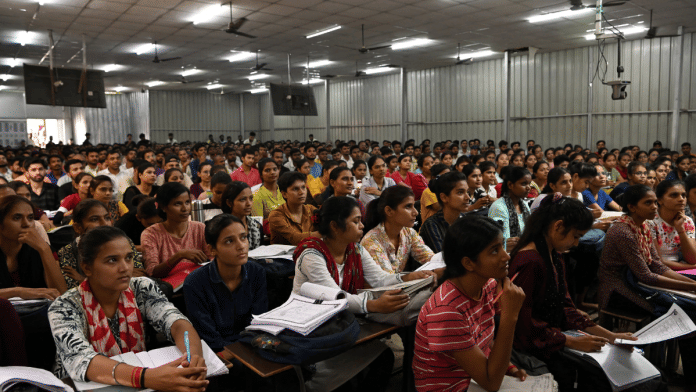New Delhi: Five years after the National Education Policy (NEP) 2020 proposed it, the Centre is set to move a draft bill to establish a single, overarching regulator for higher education. Officials said the new body will set and enforce standards across the sector—excluding medical and legal education—replacing the fragmented regulatory structure currently in place.
The Higher Education Commission of India (HECI) Bill, 2025, which been listed for introduction in the upcoming Winter Session of Parliament beginning December 1, aims to establish HECI as the sole authority responsible for coordinating and determining standards in higher education, research, and scientific and technical institutions nationwide.
When passed, the Bill will merge three existing regulators—the University Grants Commission (UGC), the All India Council for Technical Education (AICTE), and the National Council for Teacher Education (NCTE)—into a unified, central body.
Currently, the UGC regulates non-technical higher-education institutions in India, the AICTE oversees technical education, and the NCTE regulates teacher education.
Former UGC chairperson M. Jagadesh Kumar told ThePrint that the HECI will translate NEP 2020’s vision into clear norms on curriculum flexibility, credit transfer, research culture, and student support. He said that HECI can reform Indian higher education at a structural level, rather than through small, incremental changes.
“It can also use data on learning outcomes and graduate trajectories to identify gaps, helping India build universities that respond to local realities while keeping pace with global advances in science, technology, and professions,” he told ThePrint.
Kumar said that currently universities and colleges deal with multiple agencies with overlapping mandates, creating duplication and confusion.
“HECI, as an independent overarching regulator, will align entry, accreditation, and standards in one place. It will ensure smooth credit mobility, transparent information on quality, and consider access, equity, and excellence together, protecting student interests while supporting diverse institutional missions,” he said.
According to government officials, the proposed law will be in line with the NEP 2020. “The HECI will have four verticals that together act as a single-point regulator for higher education, replacing multiple bodies that exist now,” a senior government official told ThePrint.
“These four pillars are the National Higher Education Regulatory Council (NHERC) for regulation, the National Accreditation Council (NAC) for accreditation, the Higher Education Grants Council (HEGC) for funding, and the General Education Council (GEC) for setting learning outcomes,” the official added.
HECI is also likely to have the authority to impose heavy financial penalties on higher education institutions for violation of established norms.
“At present, there are no substantial direct financial penalties. Under the UGC Act, 1956, the fine for violations such as running fake universities is only Rs 1,000, which is very low. Therefore, granting HECI the power to impose higher penalties would be a significant step toward stricter enforcement and accountability,” another government official told ThePrint.
Previous attempt at introducing HECI
The Narendra Modi government had in 2018 brought a draft HECI bill in 2018 first to replace UGC with a unified regulatory body.
It proposed a commission comprising a chairperson, vice-chairperson, and 12 members appointed by the Centre, tasked with setting standards for institutions and granting autonomy. However, the Bill did not subsume the AICTE or NCTE fully, nor did it empower HECI to disburse funds, leaving financial control with the Ministry of Human Resource Development now known as the Union Ministry of Education.
The draft faced criticism for potentially “centralising” power. However, after the NEP 2020 was released in July 2020, the bill was sent back for revision
Meanwhile, concerns over centralisation persist under the proposed HECI Bill.
In February this year, a parliamentary panel raised issues over its “central government-heavy composition” and limited state representation. The Standing Committee on Education, Women, Children, Youth and Sports, chaired by Congress MP Digvijaya Singh, warned that reducing state control could threaten institutions in rural areas with limited infrastructure or faculty, and “indirectly fuel privatisation”, the committee’s report said.
(Edited by Viny Mishra)
Also read: After UK’s University of Southampton, 5 more foreign varsities planning campuses in India






